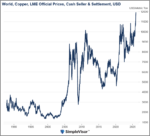|
While our forecasts remain unchanged for now, external drags on growth prospects for the euro area look set to persist for longer than we had previously expected. A potential improvement in euro area growth in H2 2019 on the back of a revival in the global economy is in jeopardy due to the intensifying trade dispute between the US and China. The euro area is not directly affected, but its indirect exposure to this dispute is not insignificant. Potentially weaker domestic demand in the US, China and the rest of Asia as a result of the trade dispute could mean that exports of euro area final goods to those countries also suffer. Unsurprisingly, Germany stands out as the most exposed country, not only in absolute terms but also relative to GDP. Aside from the US/China trade dispute, Europe also faces the risk of higher US import tariffs on EU-produced cars. Last year’s production problems linked to new regulatory standards (WLTP) are fading, but the threat of auto tariffs remains despite the deadline having been postponed to November. There are reasons to think that the negative impact from renewed trade tensions will not be too severe, given the likelihood of policy responses should the situation continue to escalate. We could have a continuation of the fiscal and monetary stimulus we are already seeing in China, for example, and there is also scope for the authorities in the euro area to support the economy. The European Central Bank’s tool box is not completely empty, with the terms of its new round of targeted longer-term refinancing operations (TLTRO) for banks, to be unveiled in June, particularly important. |
Extra Euro Area Export of Goods in Volume, 2012-2019 |
However, the longer uncertainty and external weakness remain, the higher the risk that weakness spreads to domestic demand, which has been resilient so far. Of all components of GDP, corporate investment is the most sensitive to uncertainty.
While we continue to forecast euro area GDP growth to average 1.4% in 2019 (unchanged from December last), downside risks have significantly increased. We will review our growth numbers when the final Q1 GDP breakdown is published in early June.
Full story here Are you the author? Previous post See more for Next postTags: Euro area,euro area growth,Macroview,newsletter,Pictet

































